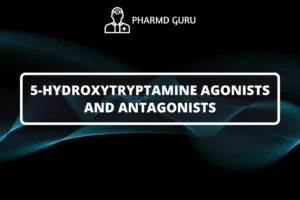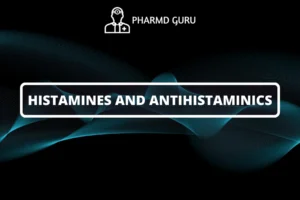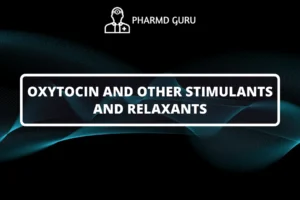LIPID DERIVED AUTOCOIDS AND PLATELET ACTIVATING FACTOR
Lipid derived autocoids and platelet activating factor (PAF) are important mediators in the body that play significant roles in various physiological processes and pathological conditions. In this article, we will delve into the pharmacology of lipid-derived autocoids and PAF, including their functions, mechanisms of action, and clinical implications.
SCROLL DOWN TO THE BOTTOM OF THIS PAGE FOR ACTUAL NOTES.
Lipid Derived Autocoids
Lipid derived autocoids are signaling molecules derived from lipids that act locally to regulate numerous physiological processes. These autocoids include prostaglandins, leukotrienes, and thromboxanes.
Prostaglandins
Prostaglandins are a class of lipid-derived autocoids that exert diverse effects on various tissues and organs. They are synthesized from arachidonic acid through the action of cyclooxygenase enzymes (COX-1 and COX-2). Prostaglandins are involved in several physiological functions, such as inflammation, pain, regulation of blood flow, and gastric acid secretion.
- Mechanism of Action: Prostaglandins act by binding to specific G-protein coupled receptors located on the cell surface. This receptor activation triggers intracellular signaling pathways, leading to the modulation of cellular functions.
- Clinical Implications: Prostaglandin analogs are widely used in clinical practice for their therapeutic properties. For example, prostaglandin E1 analogs like alprostadil are used to treat erectile dysfunction, while prostaglandin E2 analogs like misoprostol are employed to prevent gastric ulcers.
Leukotrienes
Leukotrienes are lipid-derived autocoids that are derived from arachidonic acid through the action of lipoxygenase enzymes. They play a crucial role in allergic and inflammatory responses, particularly in conditions such as asthma and allergic rhinitis.
- Mechanism of Action: Leukotrienes exert their effects by binding to specific receptors, such as leukotriene receptors BLT1 and BLT2, located on target cells. This binding triggers various cellular responses, including smooth muscle contraction, bronchoconstriction, and increased vascular permeability.
- Clinical Implications: Leukotriene receptor antagonists, such as montelukast and zafirlukast, are commonly prescribed for the treatment of asthma. These medications block the effects of leukotrienes, helping to reduce bronchoconstriction and inflammation.
Thromboxanes
Thromboxanes are lipid-derived autocoids that are produced by platelets. They play a critical role in hemostasis and platelet aggregation.
- Mechanism of Action: Thromboxanes act by binding to specific thromboxane receptors located on platelets, leading to platelet activation, aggregation, and vasoconstriction.
- Clinical Implications: Drugs that inhibit thromboxane synthesis or block its receptors, such as aspirin and clopidogrel, are widely used as antiplatelet agents to prevent blood clot formation in conditions such as myocardial infarction and stroke.
Platelet-Activating Factor (PAF)
Platelet-activating factor (PAF) is a potent phospholipid-derived autocoid that is involved in various biological processes, including inflammation, immune response, and cardiovascular regulation.
- Mechanism of Action: PAF acts by binding to specific PAF receptors, which are widely distributed in different tissues and cells. PAF receptor activation triggers intracellular signaling cascades, leading to the modulation of cellular functions.
- Clinical Implications: PAF is implicated in several pathological conditions, including asthma, allergic reactions, and sepsis. PAF receptor antagonists, such as apafant and lexipafant, have been studied as potential therapeutic agents for these conditions.
ACTUAL NOTES:




